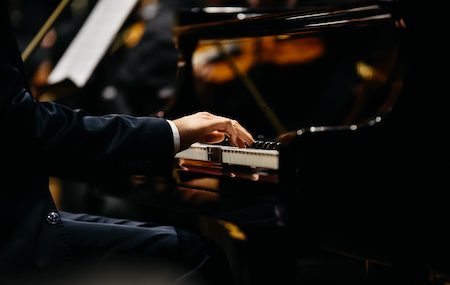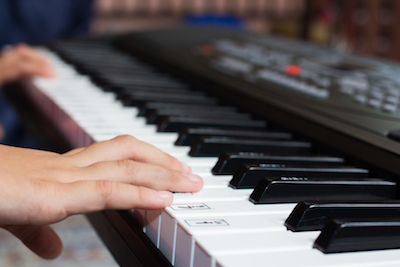Thinking of buying a piano to learn to play?
With just a few searches, you might already be stumped at what equipment to buy. Should you purchase an acoustic piano? What about a keyboard? Or a digital piano? What’s the difference? Where should you begin?
As a piano dealer, this is one of the most common questions we receive.
It’s easy to get overwhelmed, especially when you start looking at prices. You can easily find a keyboard at your local big box store for very little money. And acoustic pianos – they’re giving them away on Craigslist.
What’s the difference? And what should you choose?
One of the most obvious differences is size. Acoustic pianos take up space inside your home. Keyboards are small, portable, and can be tucked away when not in use. That can be a big bonus for a family without a lot of space. But that’s also where a lot of people go wrong.
Keyboards aren’t necessarily equal to pianos. They can be smaller in size, which equates to fewer keys. A full size piano has 88 keys. A beginner might not use them all, but with practice and growth, you’ll quickly stretch and need a fuller range. Keyboards may typically be 61 to 76 keys, and often aren’t weighted like a piano’s keys. That means the skills aren’t transferable. When you learn on a keyboard, it’ll seem like a new instrument when you move to an acoustic piano. Your fingers simply won’t know what to do.
Pianos also have more voice and depth in the way they play. Imagine wanting to play a familiar tune, yet it sounds tinny, off somehow. People rarely choose to play when they can’t get the sound they’re looking for. That comes from a high quality instrument.
Keyboards also come with their own way of playing. They may teach you to play chords with the left hand, using the electronics to keep the beat, Use a button to change the tempo, create a beat, and have the keys do the work.
Also, keep in mind there is a difference between a keyboard and a digital piano. A digital piano offers you everything an acoustic piano does, while a keyboard focuses more on making music at the touch of a button.
To be an accomplished musician, and to truly understand the art of creating music with a piano, it’s important to start with the right tool.
We can help educate you on understanding today’s pianos, and help you make the right choice for your needs.



